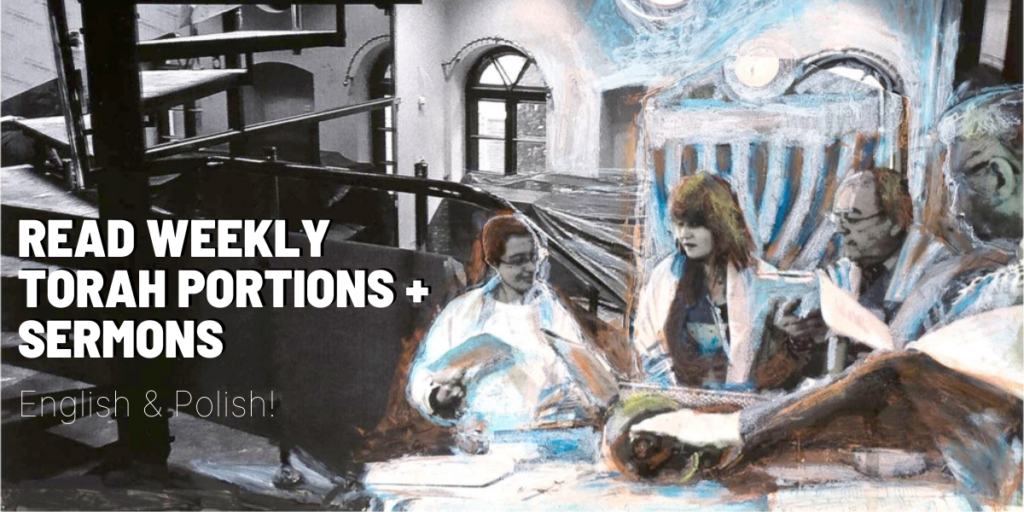Thoughts on Parashat Tazria-Metzora
Death and life are in the power of the tongue, and those who love it will eat its fruit.
(Proverbs 18:21)
 Our parasha for this week talks extensively about some form of a skin disease. Some scholars call it now “scale disease,” but for centuries, if not millenia, people thought that the Torah was talking about leprosy. But this is a misnomer. The famous Greek physician, Hippocrates, grouped together a bunch of different skin diseases under a single Greek name “lepra”. Then, in the 3rd century BCE our Jewish scholars, probably for lack of a better word, used the name “lepra” in the first, Greek translation of the Hebrew Bible, known as the Septuagint. Since then, people all over the world have thought the Bible was talking about leprosy.
Our parasha for this week talks extensively about some form of a skin disease. Some scholars call it now “scale disease,” but for centuries, if not millenia, people thought that the Torah was talking about leprosy. But this is a misnomer. The famous Greek physician, Hippocrates, grouped together a bunch of different skin diseases under a single Greek name “lepra”. Then, in the 3rd century BCE our Jewish scholars, probably for lack of a better word, used the name “lepra” in the first, Greek translation of the Hebrew Bible, known as the Septuagint. Since then, people all over the world have thought the Bible was talking about leprosy.
For hundreds of years, lepers were put in colonies and separated from other people because it was believed that they were afflicted with this contagious, Biblical disease. No, leprosy is not contagious. This is one of the best and most terrifying examples of how much damage a single mistaken word can have.
What kind of skin disease the Torah speaks about then? We don’t actually know but the good news is that it doesn’t really matter. Our Sages tell us in Talmud that this disease had disappeared long before the talmudic era, that it only affected people in Biblical times. Moreover, the Torah talks about it in such a way that it is actually impossible to categorize it as a mere skin disease: it can appear in the fabric of one’s clothes or on the walls of houses. No known skin disease can do that. It looked like a dark green or dark red mold that went deep into the fabric of the cloth or beyond the surface of the plaster and into the stones of the house.
What matters here is the meaning and the message of the Biblical story. According to biblical descriptions this disease-like phenomenon was transcending its physical nature: it was thought to be a physical manifestation of one’s spiritual degradation, at the core of which was the harmful and antisocial use of speech – evil tongue, lashon hara. Someone who was gossip-mongering and speaking in hurtful ways, speaking evil tongue, was first warned with moldy walls. If they didn’t get the message, the fungus moved to their clothes, and, if they still didn’t get it, then finally it showed up on their bodies. The harmful speech they were involved in could force people out of their homes, cause them to lose their possessions, and ultimately, harm their physical health. And once the damage is done, it is very hard to fix. The smitten person had to spend some time on the outside of the community. In the isolation and solitude beyond the city limits without people to talk to, a person might be able to think more clearly about how they had been using speech.
These days we would not have followed the remedy prescribed by the Bible – as long as someone has not committed a crime, we would not isolate that person from the community. But even today, using harmful, especially openly defaming or hateful language can force people to to be isolated, out of their homes or even lose everything they possess. Therefore, on the allegorical level, the process described in the Torah aligns with our reality today in terms of its final outcomes. People who regularly smear, slander or defame others can end up in the place the Torah is talking about once they destroy their relationships with others. Unless they are politicians, then they may get away with everything, for a long time, but in the end they will face the consequences too.
Therefore, I suggest we follow the allegorical understanding of the reality described in the Torah: our internal degradation resulting in harmful, toxic, venomous language will ultimately have its physical manifestation in the real world and will have a life of its own. Think about it for a moment – isn’t that absolutely the case these days, especially on the internet, in social media? It is indeed. Whatever we say, whatever we express in cyberspace is broadcasted instantly and virtually to the entire world – everyone can see it. The Internet never forgets and even if it’s removed, there are ways to uncover it. Therefore, let me conclude with the quote from Rabbi Jonathan Sacks, z’’l:
Never say or do in private what you would be ashamed to read about on the front page of tomorrow’s newspapers. That’s the basic theme of the law of Tzara’at, updated to today.
Shabbat shalom,
Rabbi Mirski

















Leave a Reply